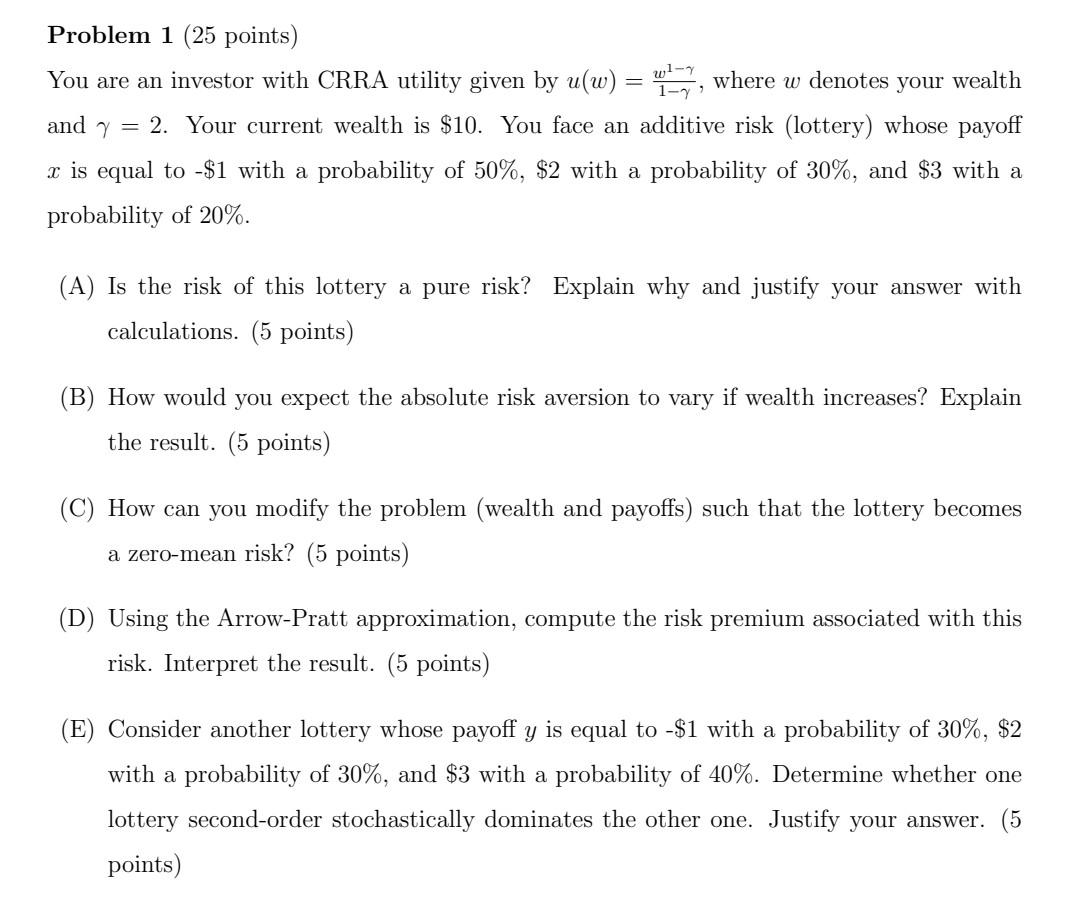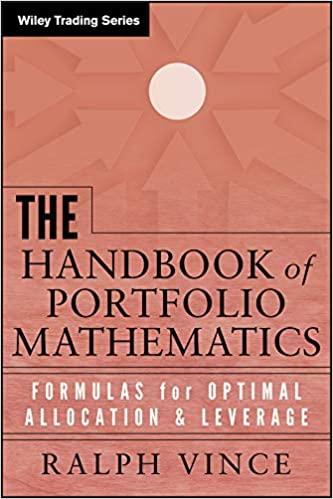Answered step by step
Verified Expert Solution
Question
1 Approved Answer
Kindly answer all questions as soon as possible. it's very urgent. Will upvote for the first. Problem 1 (25 points) You are an investor with

Kindly answer all questions as soon as possible. it's very urgent. Will upvote for the first.
Problem 1 (25 points) You are an investor with CRRA utility given by u(w) = 7, where w denotes your wealth = and y 2. Your current wealth is $10. You face an additive risk (lottery) whose payoff x is equal to -$1 with a probability of 50%, $2 with a probability of 30%, and $3 with a probability of 20%. (A) Is the risk of this lottery a pure risk? Explain why and justify your answer with calculations. (5 points) (B) How would you expect the absolute risk aversion to vary if wealth increases? Explain the result. (5 points) (C) How can you modify the problem (wealth and payoffs) such that the lottery becomes a zero-mean risk? (5 points) (D) Using the Arrow-Pratt approximation, compute the risk premium associated with this risk. Interpret the result. (5 points) (E) Consider another lottery whose payoff y is equal to -$1 with a probability of 30%, $2 with a probability of 30%, and $3 with a probability of 40%. Determine whether one lottery second-order stochastically dominates the other one. Justify your answer. (5 points) Problem 1 (25 points) You are an investor with CRRA utility given by u(w) = 7, where w denotes your wealth = and y 2. Your current wealth is $10. You face an additive risk (lottery) whose payoff x is equal to -$1 with a probability of 50%, $2 with a probability of 30%, and $3 with a probability of 20%. (A) Is the risk of this lottery a pure risk? Explain why and justify your answer with calculations. (5 points) (B) How would you expect the absolute risk aversion to vary if wealth increases? Explain the result. (5 points) (C) How can you modify the problem (wealth and payoffs) such that the lottery becomes a zero-mean risk? (5 points) (D) Using the Arrow-Pratt approximation, compute the risk premium associated with this risk. Interpret the result. (5 points) (E) Consider another lottery whose payoff y is equal to -$1 with a probability of 30%, $2 with a probability of 30%, and $3 with a probability of 40%. Determine whether one lottery second-order stochastically dominates the other one. Justify your answer. (5 points)Step by Step Solution
There are 3 Steps involved in it
Step: 1

Get Instant Access to Expert-Tailored Solutions
See step-by-step solutions with expert insights and AI powered tools for academic success
Step: 2

Step: 3

Ace Your Homework with AI
Get the answers you need in no time with our AI-driven, step-by-step assistance
Get Started


